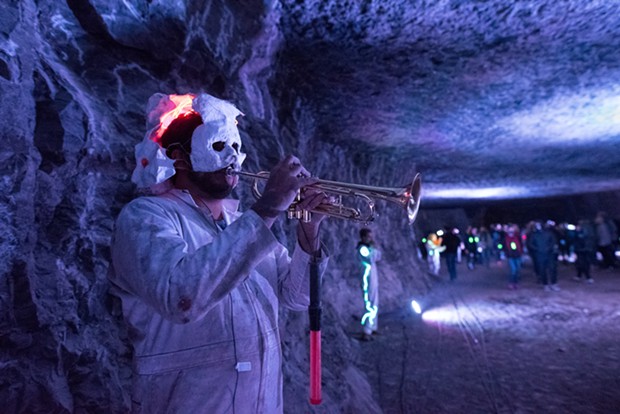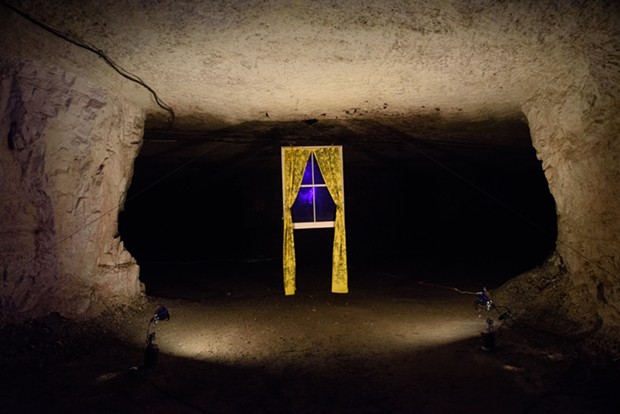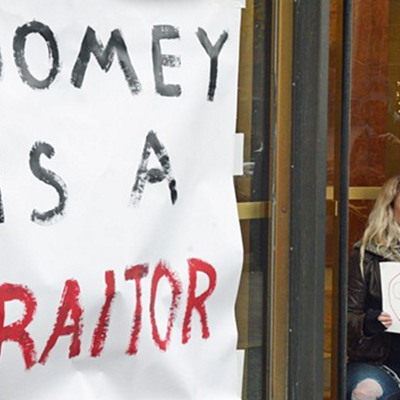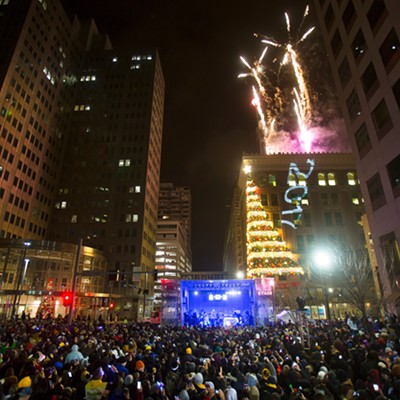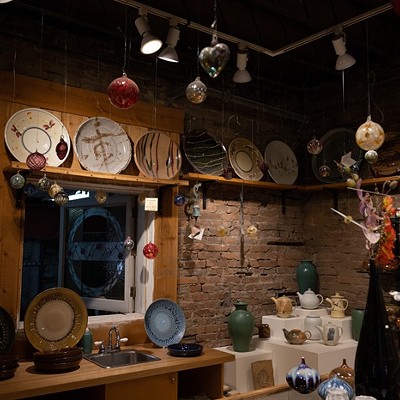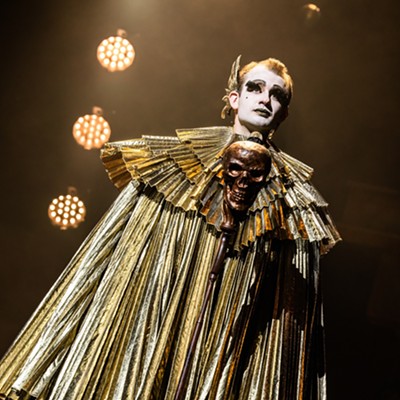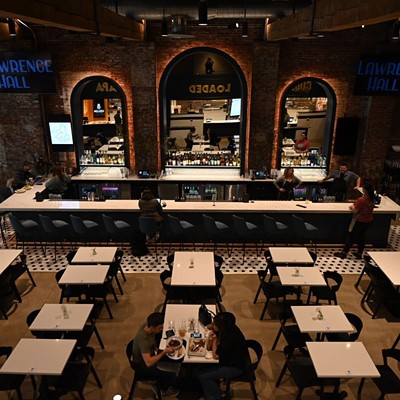Tuesday, December 5, 2017
CMU takes art underground with audiovisual experience SubSurface
On Dec. 2, a group of Carnegie Mellon University creatives shuttled a crowd of curious travelers from CMU's campus to a limestone mine for a subterranean exploration of sight and sound. The location had been turned into an underground storage facility, but for a night it was repurposed into a deep, winding gallery, a space through which light and sound travelled in interesting and unexpected ways.
The project featured students and faculty from the College of Fine Arts, as well as the Integrative Design Arts and Technology (IDeATe) Network in a former limestone mine in Brady's Bend, Armstrong County.
City Paper had a brief email chat with Jesse Stiles, one of the event's coordinators and member of the experimental music group Exploded Ensemble, to shed some light on the mysterious, immersive audiovisual experience.
How did you come to know the acoustic properties of limestone? What piqued your curiosity to feature sound and visual installations in a limestone mine?
This space was identified by my colleague Rich Pell in CMU's School of Art. Rich is leading a new course, Art and the Anthropocene, in which students create art and research in response to the built environment. Given Pennsylvania's history with mining, Rich was particularly interested in finding a mine that had been repurposed, and that led to the identification of this limestone mine which is now used as an underground storage facility.
Rich and I have collaborated on many projects in the last 15 years and he was familiar with my work in producing audiovisual concerts in non-traditional spaces. So when he invited me to join him in creating an evening of art and music in this space I was thrilled to jump on board with my experimental music group at CMU, Exploded Ensemble.
The acoustics in the limestone mine were quite different from what I imagined they might be. The space is huge (the overall mine is the size of 1000 football fields) and I thought it would be overwhelmingly reverberant. To my surprise musical information carries through the spaces really well, without being overwhelmed by echoes and reflections. The one thing that gets massively extended in the mine is bass, so everything just sounds huge in there. I think it's a great concert hall for experimental music! You can get a sense of what it sounds like by checking out a recording we made in the space —- it can be heard at the end of episode 2 in the SubSurface podcast.
What has been the most exciting thing about working on this project? What's been the most challenging?
There's of course no infrastructure in the mine for the presentation of electroacoustic music or multimedia artwork. No sound distribution systems, no controllable lighting, no power in various spaces —- so you have to set that all up yourself. Once it's in place you can do amazing things because the space is so dramatic and sound and light and are carried through the space in such unusual ways. But the amount of work that's required is significant.
Another huge challenge was designing an audience experience that would lead them through a variety of spaces while presenting a coherent artistic journey. The logistics for organizing all of that were pretty deep.
Would you like to do more or have plans to curate more performances like this in other former mines/industrial buildings/natural settings?
I can't make any promises today but I can tell you that this project has generated a ton of enthusiasm in the CMU community and we're looking at next year's academic calendar with eager eyes.
__
The project featured students and faculty from the College of Fine Arts, as well as the Integrative Design Arts and Technology (IDeATe) Network in a former limestone mine in Brady's Bend, Armstrong County.
City Paper had a brief email chat with Jesse Stiles, one of the event's coordinators and member of the experimental music group Exploded Ensemble, to shed some light on the mysterious, immersive audiovisual experience.
How did you come to know the acoustic properties of limestone? What piqued your curiosity to feature sound and visual installations in a limestone mine?
This space was identified by my colleague Rich Pell in CMU's School of Art. Rich is leading a new course, Art and the Anthropocene, in which students create art and research in response to the built environment. Given Pennsylvania's history with mining, Rich was particularly interested in finding a mine that had been repurposed, and that led to the identification of this limestone mine which is now used as an underground storage facility.
Rich and I have collaborated on many projects in the last 15 years and he was familiar with my work in producing audiovisual concerts in non-traditional spaces. So when he invited me to join him in creating an evening of art and music in this space I was thrilled to jump on board with my experimental music group at CMU, Exploded Ensemble.
The acoustics in the limestone mine were quite different from what I imagined they might be. The space is huge (the overall mine is the size of 1000 football fields) and I thought it would be overwhelmingly reverberant. To my surprise musical information carries through the spaces really well, without being overwhelmed by echoes and reflections. The one thing that gets massively extended in the mine is bass, so everything just sounds huge in there. I think it's a great concert hall for experimental music! You can get a sense of what it sounds like by checking out a recording we made in the space —- it can be heard at the end of episode 2 in the SubSurface podcast.
What has been the most exciting thing about working on this project? What's been the most challenging?
There's of course no infrastructure in the mine for the presentation of electroacoustic music or multimedia artwork. No sound distribution systems, no controllable lighting, no power in various spaces —- so you have to set that all up yourself. Once it's in place you can do amazing things because the space is so dramatic and sound and light and are carried through the space in such unusual ways. But the amount of work that's required is significant.
Another huge challenge was designing an audience experience that would lead them through a variety of spaces while presenting a coherent artistic journey. The logistics for organizing all of that were pretty deep.
Would you like to do more or have plans to curate more performances like this in other former mines/industrial buildings/natural settings?
I can't make any promises today but I can tell you that this project has generated a ton of enthusiasm in the CMU community and we're looking at next year's academic calendar with eager eyes.
__
Tags: CMU , Carnegie Mellon University , Exploded Ensemble , innovation , art , audiovisual , Rich Pell , Jesse Stiles , SubSurface , limestone , FFW>> , Image


